You’re standing in a boutique home goods store, admiring a stunning white porcelain dish with that unmistakable French elegance.
The price tag makes you pause. Is it really worth the investment? With so many French porcelain brands claiming heritage and quality, how do you know which ones deliver on their promises?
Whether you’re furnishing your first home, upgrading your kitchenware, or searching for an heirloom-quality piece, understanding these porcelain brands can feel overwhelming.
This comprehensive guide will walk you through everything you need to know about French porcelain, from iconic traditional brands to antique treasures, proper terminology, and practical tips for choosing pieces that will grace your table for generations to come.
Traditional French Porcelain Brands
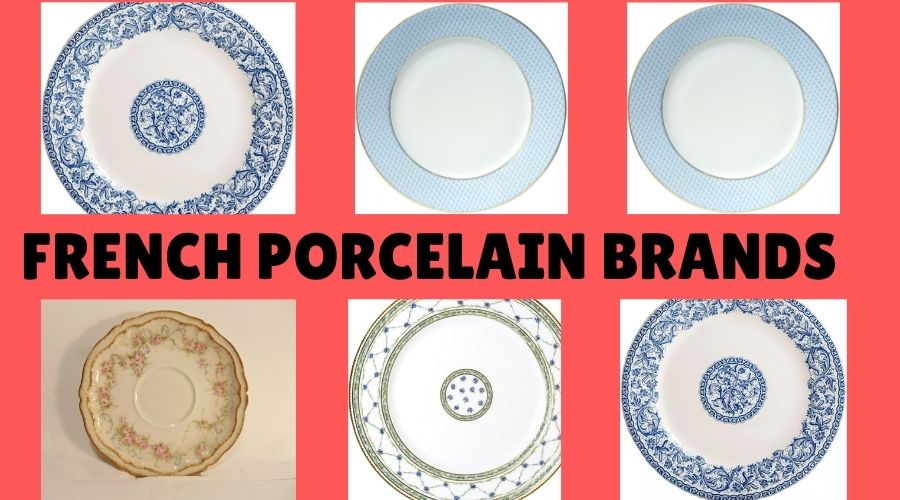
When we talk about traditional French porcelain brands, we’re discussing manufacturers that have maintained their commitment to quality craftsmanship while adapting to modern needs.
These brands represent the heart of French ceramic excellence, combining centuries-old techniques with contemporary design sensibilities.
Pillivuyt stands as one of France’s most respected porcelain manufacturers, founded in 1818.

What sets Pillivuyt apart is its unwavering commitment to producing all its porcelain in France, maintaining traditional manufacturing methods while creating pieces that work beautifully in today’s kitchens.
Their Pillivuyt Porcelain collections are known for exceptional durability and heat retention, making them favourites among professional chefs and home cooks alike.
The brand’s signature white porcelain has a distinctive creamy undertone that catches light beautifully on any table setting.
Apilco represents another cornerstone of traditional French porcelain. Established in the early 20th century, Apilco gained fame for creating the iconic white porcelain used in Parisian bistros and brasseries.
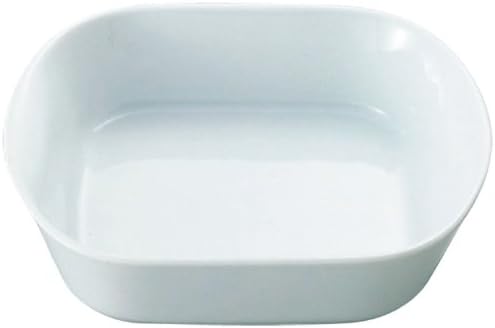
Their Apilco Porcelain French pieces embody that effortless French elegance, simple, functional, and timelessly stylish.
When comparing Pillivuyt to Apilco brand offerings, you’ll notice both emphasize durability and classic design, though Pillivuyt tends toward thicker, more substantial pieces while Apilco offers slightly more delicate profiles.
Choosing the Right Brand for Your Needs
The practical application here is understanding your specific needs. If you’re looking for everyday dinnerware that can withstand daily dishwasher use and occasional bumps, both Pillivuyt and Apilco deliver exceptional durability.
For baking enthusiasts, Pillivuyt bakeware offers superior heat distribution and retention, while Apilco bakeware provides that classic French bistro aesthetic with excellent functionality.
Antique French Porcelain Brands
Antique French porcelain represents the pinnacle of decorative arts, with brands that defined luxury and craftsmanship during their heyday.
These pieces aren’t just tableware; they’re historical artifacts that tell stories of artistic innovation and royal patronage.
Sèvres
This remains the most prestigious name in antique French porcelain. Established in 1740 and eventually becoming the royal porcelain manufactory, Sèvres created pieces for French royalty and aristocracy.
Their signature cobalt blue (bleu de Sèvres) and elaborate gold decoration set standards that other manufacturers aspired to match.
Genuine antique Sèvres pieces command extraordinary prices at auction, with some selling for hundreds of thousands of dollars.
Limoges
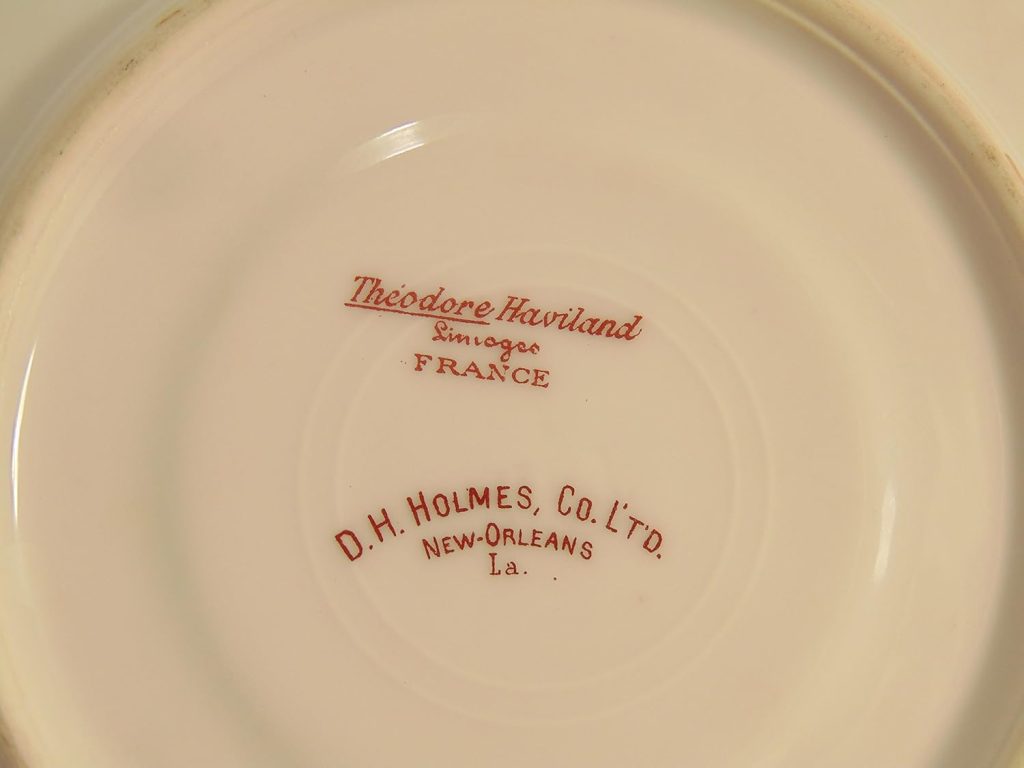
This porcelain represents an entire region’s contribution to French ceramic excellence. The city of Limoges became synonymous with fine porcelain after kaolin deposits were discovered nearby in 1768.

Numerous manufacturers operated in this region, each with distinct marks and styles.
Haviland, one of the most recognized Limoges producers, created exquisite dinnerware patterns that graced American tables throughout the 19th and early 20th centuries.
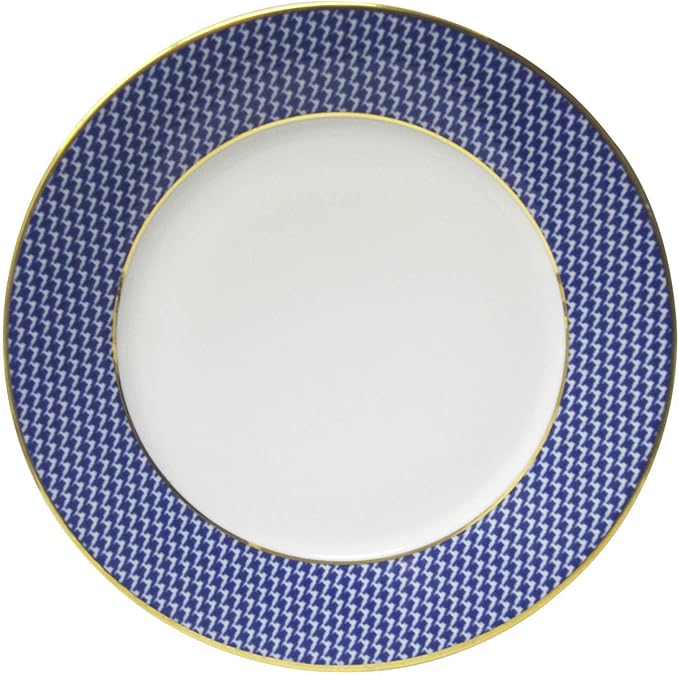
Their hand-painted florals and delicate gold trim exemplify the romantic aesthetic of the Victorian era.
Samson et Cie
This brand operated from 1845 to 1969, creating both original designs and reproductions of earlier porcelain styles.
While their reproductions were clearly marked initially, over time these marks have sometimes been removed, making authentication tricky for collectors.
Despite this controversy, Samson pieces demonstrate exceptional craftsmanship and artistry in their own right.
Practical Tips for Collecting Antique French Porcelain
If you’re drawn to antique pieces, start by learning manufacturer marks and signatures.
Invest in a good reference book or consult with reputable dealers who specialize in French porcelain.
Examine pieces carefully for repairs, which significantly affect value.
Most importantly, buy what you love, even if a piece isn’t museum-quality. If it brings you joy and fits your budget, it’s a worthy addition to your collection.
Old French Porcelain Brands
The distinction between “old” and “antique” French porcelain matters in the collecting world.
While antique generally refers to items over 100 years old, old French porcelain brands encompass manufacturers from the late 19th through mid-20th centuries, pieces that carry historical significance without always commanding antique prices.
Bernardaud
Founded in Limoges in 1863, bridges the gap between historical and contemporary porcelain production.
This family-owned company continues operating today, but its older pieces from the early to mid-20th century represent exceptional value for collectors.
Bernardaud collaborated with renowned artists and designers, creating patterns that ranged from traditionally ornate to surprisingly modern.
Their Art Deco pieces from the 1920s-1930s are particularly sought-after.
Raynaud
Began in Limoges in 1849 and built a reputation for creating custom porcelain for hotels, restaurants, and ocean liners.

Their vintage pieces often feature hotel crests or shipping line logos, making them fascinating historical documents.
The company still produces today, but its mid-century pieces offer collectors accessible entry points into quality French porcelain.
Gien faïence
While technically earthenware rather than porcelain, it deserves mention in any discussion of French ceramic heritage.
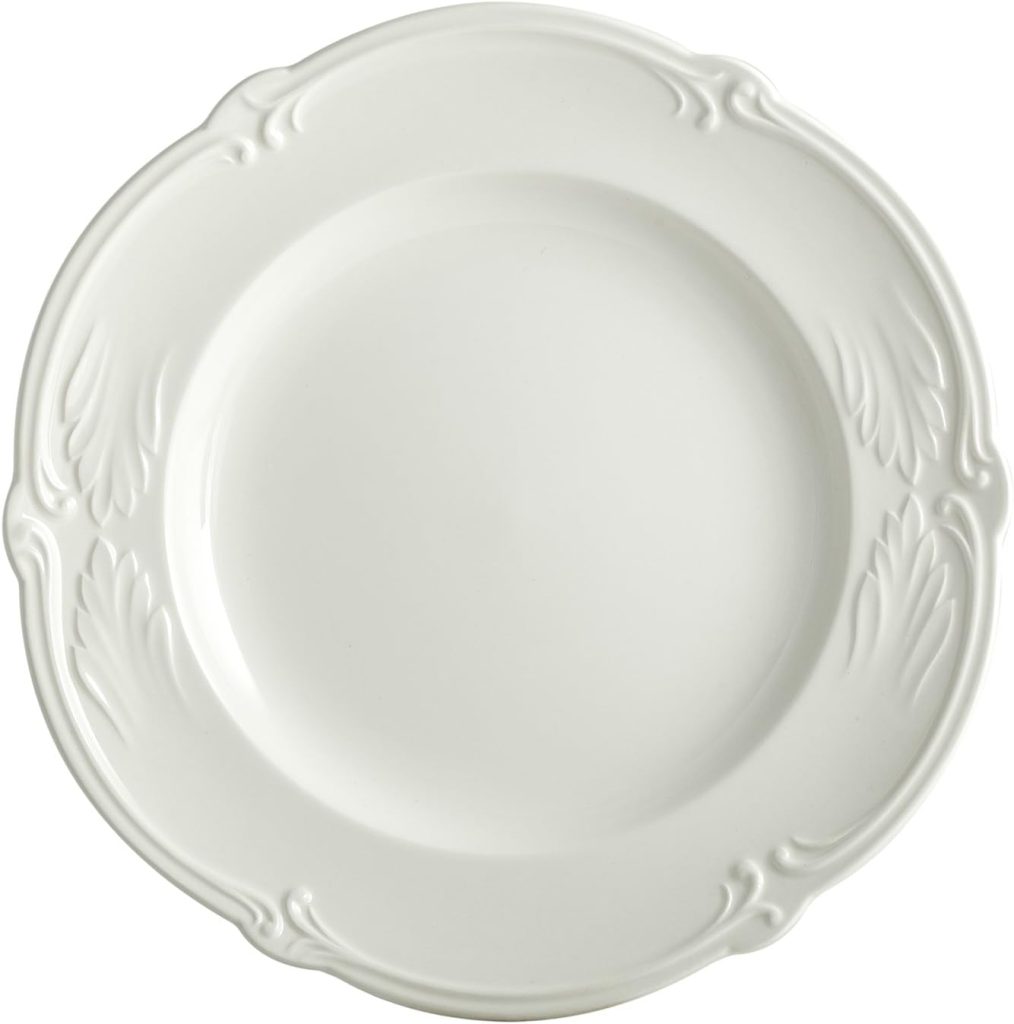
Founded in 1821, Gien became famous for colorful hand-painted patterns depicting French countryside scenes, flowers, and wildlife.
Their older patterns from the 19th and early 20th centuries have developed a devoted following among collectors who appreciate their whimsical charm and durability.
Making Old Porcelain Work in Modern Homes
You don’t need to keep old French porcelain locked in a cabinet. These pieces were made to be used, and many are remarkably durable.
Mix vintage patterns with contemporary table linens for an eclectic look.
Use Apilco cereal bowls alongside vintage Limoges plates for an interesting contrast between classic bistro style and ornate decoration.
Display larger serving pieces on open shelving where their artistry can be appreciated daily.
What’s Another Name for Porcelain?
Understanding porcelain terminology helps you navigate both shopping and collecting with confidence.
Porcelain goes by several names, each with subtle distinctions that reflect its origins, composition, or cultural context.
China
This is perhaps the most common alternative name for porcelain in everyday English, derived from the country where porcelain was first developed during the Tang Dynasty (618-907 CE).
When someone refers to their “good china,” they’re typically talking about fine porcelain dinnerware reserved for special occasions.
The terms are often used interchangeably in casual conversation, though technically “china” can also refer to bone china, which includes bone ash in its composition.
Fine china
This specifically denotes high-quality porcelain dinnerware, emphasizing its delicate appearance and superior craftsmanship.
This term distinguishes premium porcelain from everyday ceramics. When you’re shopping for Apilco pasta bowls or other French porcelain pieces, you’re investing in fine china that combines beauty with surprising durability.
Vitreous china
This describes porcelain that has been fired at high temperatures until it becomes glass-like (vitrified) and non-porous.
This term is more common in technical or commercial contexts, particularly when discussing bathroom fixtures or commercial dinnerware.
The vitrification process makes porcelain resistant to staining and bacterial growth, a key reason why it’s prized for both tableware and sanitary applications.
Ceramic
This is the broader category that includes porcelain, along with earthenware, stoneware, and other clay-based materials.
All porcelain is ceramic, but not all ceramic is porcelain. Porcelain distinguishes itself through its white color, translucence, and high firing temperature (typically 1200-1400°C or 2200-2550°F).
Why Terminology Matters When Shopping
Understanding these terms helps you evaluate product descriptions accurately.
If something is described simply as “ceramic,” it might not have porcelain’s durability or appearance.
True porcelain should be somewhat translucent when held to light, have a clear ring when tapped gently, and display a smooth, glass-like surface.
When you’re comparing products, these distinctions affect both performance and value.
What is French Porcelain Called?
French porcelain carries specific names that reflect its cultural heritage and manufacturing traditions. Understanding these terms deepens your appreciation for what makes French porcelain special.
Porcelaine de France
This is the straightforward French term for French porcelain, but it signifies more than just geography.
This designation indicates porcelain manufactured in France according to traditional methods, often with strict quality standards.
When you see “Porcelaine de France” marked on pieces, you’re looking at products that typically meet higher production standards than mass-market alternatives.
Porcelaine de Limoges
This deserves special recognition as both a geographical and a quality indicator. Limoges porcelain isn’t just porcelain made in the Limoges region—it represents a specific tradition of excellence backed by ideal raw materials.
The kaolin deposits near Limoges produce porcelain of exceptional whiteness and translucency.
Many manufacturers mark their pieces with “Limoges, France” to distinguish them from porcelain made elsewhere.
Both Haviland and Bernardaud produce authentic Limoges porcelain that carries this prestigious designation.
Porcelaine dure
This translates to “hard-paste porcelain,” the true porcelain formula that includes kaolin, feldspar, and quartz.
This is the type of porcelain that French manufacturers perfected, creating pieces with superior durability and that distinctive luminous quality.
Hard-paste porcelain requires extremely high firing temperatures but results in the strongest, most beautiful porcelain.
Porcelaine tendre
Or “soft-paste porcelain” was developed in Europe before manufacturers discovered the hard-paste formula.
Early French porcelain, including pieces from Sèvres before 1769, used soft-paste formulas.
These pieces are more fragile and less translucent than hard-paste porcelain but often feature more elaborate decoration since the material was easier to work with before firing.
Regional Variations and What They Mean
Different regions of France developed distinct porcelain styles. Limoges is known for pure white porcelain and elegant decoration.
Sèvres represents royal magnificence and elaborate artistic decoration.
Understanding these regional characteristics helps you appreciate the diversity within French porcelain and choose pieces that align with your aesthetic preferences.
The Manufacturing Process: What Makes French Porcelain Special
Understanding how French porcelain is made helps explain why it commands premium prices and why certain brands have maintained their reputations for centuries.
The process combines art, science, and painstaking attention to detail.
Traditional French porcelain begins with carefully selected raw materials. Kaolin (china clay) provides whiteness and structure, feldspar acts as a flux to help materials fuse, and quartz adds strength.
The specific proportions and quality of these materials significantly impact the final product’s appearance and durability.
French manufacturers, particularly those in Limoges, benefit from access to exceptionally pure kaolin deposits.
The shaping process varies depending on the piece. Simple forms might be created using molds, while more complex pieces require skilled artisans who shape the porcelain on potter’s wheels or construct intricate forms by hand.
At this stage, the material is still fragile and pliable, a seemingly delicate state that requires experienced handling.
After initial shaping, pieces undergo their first firing (bisque firing) at temperatures around 900-1000°C.
This hardens the porcelain into a porous state that can accept glazes and decoration. Many French porcelain pieces receive hand-painted decoration at this stage, a process requiring steady hands and artistic skill.
The level of hand decoration significantly affects a piece’s value. Compare a simple white piece to one with intricate hand-painted florals, and you’ll understand why prices vary dramatically.
The glaze application and final firing happen at extreme temperatures (1200-1400°C), vitrifying the porcelain and fusing the glaze into a smooth, glass-like surface.
This high-temperature firing gives porcelain its characteristic strength, translucence, and non-porous quality.
The intense heat also means that any flaws in the piece or firing process become permanent—there’s no fixing mistakes at this stage.
What This Means for Your Purchase
When you invest in authentic French porcelain, you’re paying for this complex, time-intensive process.
Cheaper alternatives often skip steps, use inferior materials, or fire at lower temperatures—resulting in pieces that look similar initially but lack the durability, translucence, and beauty of true porcelain.
Quality Pillivuyt bakeware can withstand extreme temperature changes and years of use, specifically because of this rigorous manufacturing process.
Caring for Your French Porcelain
Owning beautiful French porcelain comes with the responsibility of proper care, but don’t let this intimidate you.
Most modern French porcelain is surprisingly practical for everyday use when you follow basic guidelines.
Dishwasher Use
Contemporary French porcelain from brands like Pillivuyt and Apilco is generally dishwasher-safe.
The high-quality glaze resists detergent damage, and the porcelain itself won’t absorb water or odors.
However, if pieces feature metallic decoration (gold or platinum trim), hand-washing is essential—dishwasher detergents will gradually remove these precious metal accents.
Antique and delicate vintage pieces should always be hand-washed regardless of decoration.
Temperature Considerations
Quality porcelain handles temperature extremes well, but sudden changes can cause thermal shock.
Don’t transfer a dish directly from freezer to oven, even though the porcelain could theoretically handle it—allow pieces to come closer to room temperature first.
Most French porcelain bakeware excels in oven use, with pieces like Pillivuyt bakeware and Apilco bakeware specifically designed to go from oven to table beautifully.
Storage
Stack plates with care, ideally using felt or fabric protectors between pieces to prevent scratching. The glazed surface is hard, but stacking without protection can create fine scratches over time.
Store cups by hanging them from hooks rather than stacking when possible—this prevents chips to delicate handles and rims.
Stain Removal
Porcelain’s non-porous surface resists most staining, but tea, coffee, and certain foods can leave marks over time.
For stubborn stains, create a paste with baking soda and water, apply gently with a soft cloth, and rinse thoroughly.
Avoid abrasive scrubbers that might scratch the glaze. For antique pieces with crazing (fine cracks in the glaze), be especially gentle; these cracks can trap stains and cleaning agents.
Making Porcelain Part of Daily Life
The beauty of French porcelain is that it’s meant to be used, not just displayed. Start your morning coffee in an elegant Pillivuyt cup rather than a generic mug.
Serve pasta in Apilco pasta bowls that make even a simple weeknight dinner feel special. Use Apilco cereal bowls for breakfast; they’re durable enough for daily use and beautiful enough to make ordinary moments feel elevated.
The more you use quality porcelain, the more you’ll appreciate its practical benefits alongside its aesthetic appeal.
Investing in French Porcelain: Value Considerations
Whether you’re building a collection or simply choosing dinnerware for your home, understanding value helps you make informed decisions.
French porcelain represents a spectrum of investment levels, from accessible everyday pieces to museum-quality antiques.
Everyday Contemporary Pieces
Brands like Pillivuyt and Apilco offer the best value in this category. You’re investing in pieces that will last decades with proper care, often at prices comparable to mid-range stoneware.
A complete place setting might cost $80-150, but consider the cost-per-use over the years of daily service.
These pieces rarely go on sale, but their durability means you won’t need to replace them.
Vintage and Collectible Pieces
Mid-20th-century French porcelain from established brands often represents exceptional value.
These pieces have proven their durability over decades, and their prices haven’t yet reached the levels of genuine antiques.
You might find vintage Limoges dessert plates for $15-30 each, or vintage Bernardaud serving pieces for $50-150.
When comparing Pillivuyt to Apilco brand vintage offerings, both maintain value well, with complete vintage sets occasionally appreciating over time.
Antique Investment Pieces
Genuine antique Sèvres, early Limoges, or museum-quality pieces from other prestigious manufacturers represent serious financial investments.
Prices range from hundreds to hundreds of thousands of dollars, depending on rarity, condition, provenance, and artistic merit.
If you’re investing at this level, work with reputable dealers and auction houses, and consider pieces you genuinely love—appreciation isn’t guaranteed, and market values fluctuate.
Building a Collection Strategically
Start with pieces you’ll use regularly. A set of quality dinner plates, bowls, and cups from Pillivuyt Porcelain or Apilco Porcelain provides the foundation.
Add serving pieces gradually, a beautiful platter, a set of bakeware, and specialty bowls. If you’re drawn to vintage or antique pieces, buy them for their beauty and your enjoyment rather than purely as investments.
The joy of using and appreciating beautiful objects often outweighs any financial appreciation.
Common Misconceptions About French Porcelain
Let’s address some widespread myths that might be holding you back from enjoying French porcelain or leading you to make poor purchasing decisions.
Misconception 1: “French porcelain is too delicate for everyday use.”
This is perhaps the most damaging myth. While antique decorative pieces might be fragile, contemporary French porcelain from established manufacturers is remarkably durable.
Pillivuyt and Apilco pieces are used in professional restaurants where they endure far more abuse than your home would inflict.
The high-firing temperatures create an incredibly strong material; it’s the awkward handling of thin edges that causes most breakage, not inherent fragility.
Misconception 2: “All white porcelain is basically the same.”
Quality differences matter significantly. Compare an inexpensive porcelain-look ceramic to genuine French porcelain by holding each to the light.
Real porcelain shows translucence, revealing your fingers’ shadow through the material.
The weight, surface texture, and ring when tapped also differ noticeably. These qualities affect not just appearance but functionality, heat retention, resistance to chipping, and how food looks when served.
Misconception 3: “Porcelain can’t go in the microwave.”
Most contemporary French porcelain is microwave-safe, though you should always check manufacturer guidelines for specific pieces.
The porcelain itself handles microwave energy fine—it’s the metallic decoration that creates problems. Your plain white Pillivuyt or Apilco pieces are perfectly suited to microwave use.
Misconception 4: “French porcelain is always expensive.”
While investment pieces exist, many French porcelain options compete price-wise with quality stoneware or mid-range ceramic dinnerware.
The perception of expense often comes from comparing French porcelain to the cheapest possible alternatives rather than to other quality options.
When you factor in longevity, French porcelain often represents better long-term value than cheaper alternatives you’ll replace multiple times.
The Truth About Value and Practicality
French porcelain succeeds because it balances beauty with functionality.
Yes, you’re paying for aesthetic qualities, but you’re also getting superior performance in the kitchen and at the table.
Food looks better on quality white porcelain—there’s a reason fine restaurants choose it.
Porcelain’s heat retention means your coffee stays warm longer, your baked dishes stay hot from oven to table, and your cold desserts stay chilled.
These aren’t luxury concerns—they’re practical benefits you’ll appreciate daily.
Conclusion
French porcelain represents centuries of ceramic excellence, combining artistry with remarkable functionality.
From traditional brands like Pillivuyt and Apilco that continue producing exceptional pieces today, to antique treasures from Sèvres and Limoges that grace museums and collections worldwide, French porcelain offers something for every taste and budget.
Understanding the terminology, from “porcelaine de France” to the distinction between hard-paste and soft-paste porcelain, empowers you to make informed decisions whether you’re shopping for everyday dinnerware or investment pieces.
The beauty of French porcelain lies not just in its appearance but in its invitation to elevate daily life. That morning, coffee tastes better from a beautiful cup.
Dinner feels more special on elegant plates. These aren’t indulgences, they’re small acts of self-care that cost nothing once you’ve made the initial investment.
French porcelain isn’t just tableware; it’s a daily reminder that beauty and quality matter.